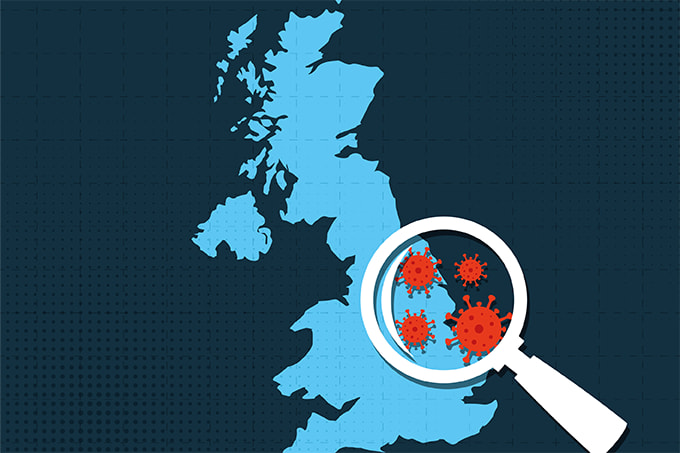
“How COVID-19 Almost Ran Me Over”
Most of the time, physicians are caregivers. The patient role – the other side – tends not to go down well.
Early 2021. My mother is 103 and has resided in a comfortable care home for the past five months after intense family efforts to convince her that it is time to give up living all by herself. Such institutions seem to be foci of COVID-19 spread, including the one where Mother lives. She falls ill in the middle of January; during her last days, I remain very close to her in an environment where COVID-19 is going around – but with Mother not yet confirmed positive. I wear the usual protective gear, but no FFP2 (N95) mask. Mother passes away on the day I receive the message that I am indeed infected with SARS-CoV-2. I immediately withdraw into isolation; I cannot attend my mother’s funeral.
The first week in isolation is not too bad. My youngest daughter, who practices medicine in the town where I live in the Netherlands, comes by each day to provide essentials and a half-hour of company. The other 23.5 hours of each day, I am completely isolated. Initially, this is bearable but, after a week, the absence of human contact and mental support starts to weigh heavily. In the second week, I develop a fever, start coughing, and breathe more shallowly and with higher frequency than before. Twelve days after I first test positive, my daughter decides that my deteriorating respiratory function signifies that I need medical support. She contacts my family practitioner, who finds significant oxygen undersaturation and decides that I should be seen in the hospital. On the stretcher in the hospital’s temporary COVID-19 admission facility, an intake chest X-ray is taken. Even for me (as a radiographic layman), the X-ray looks terrible. Hospitalization does not come as a surprise.
A few days earlier, I noted slightly painful reddish lumps on both lower legs – and now, erythema nodosum comes to mind. Researching recent medical literature, I come across a few case reports of erythema nodosum complicating COVID-19. In the hospital, I ask for a dermatologist, who supports my diagnosis as “atypical erythema nodosum.” By this time, my legs are swollen with edema, which the dermatologist addresses through bandaging. Meanwhile, my general condition improves after dexamethasone and antibiotics (upon suspicion of a secondary bacterial pneumonia) and, after four days, I am released from the hospital. My legs remain excruciatingly painful.
In the ensuing two weeks, the erythema nodosum does not improve. I am condemned to sitting all day long with my legs in an elevated position – the only thing that makes the pain bearable. The dermatologist stubbornly continues with compression to treat the edema, but without reflecting on the possible cause of the skin condition. She finally decides to do a biopsy, which I grudgingly accept. (In the cases of erythema nodosum/panniculitis I have seen in my diagnostic practice, the biopsy diagnosis rarely contributed essential data to key decisions on therapy. Effectively, the biopsy result does not provide essential information for selecting a therapeutic approach.) After two weeks of struggle with an increasingly dramatic evolution of my erythema nodosum/panniculitis, periods of fever over 40oC lead to a second hospitalization.
My perception of the case: erythema nodosum/diffuse panniculitis in the context of COVID-19, progressing into a probable cytokine storm responsible for the high fever, all on an autoimmune basis triggered by the viral infection. The sensible internist/immunologist who finally takes over my case shares my opinion. High doses of prednisone do the trick; my legs rapidly shrink, allowing me to leave the hospital in reasonable condition a week after admission. But I have lost eight kilograms of body weight, mostly muscle. Climbing even a single flight of stairs requires major effort. I feel like all of my energy goes into just staying awake through the day. Productivity has ground to a halt.
I desperately need to restore my former physical condition. Physical therapy and a carefully designed program of exercise contribute to a rapid regain of function and now, three months later, I realize that I have been fortunate. I do not regret having been close to my mother during her last days, despite the consequences to my personal health. My medical knowledge has helped me migrate through the hospital environment and interact closely with the treating physicians. My medical problems have been conquered – but the answer to the question, “What was responsible for this complication?” is still lacking.
Do you have a COVID-19 experience or a story you’d like to share? Let us know!




